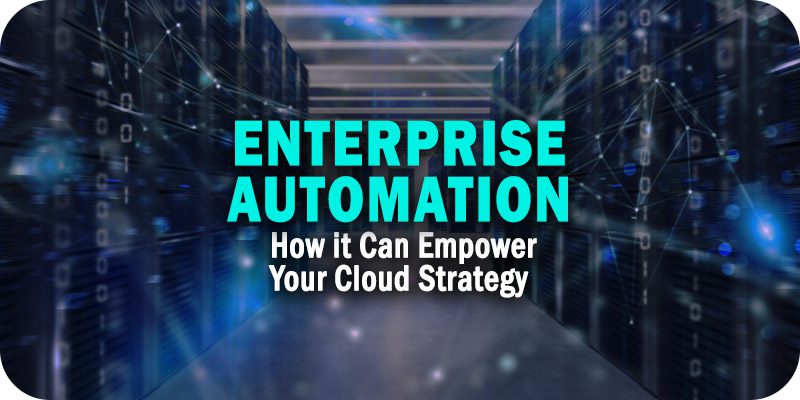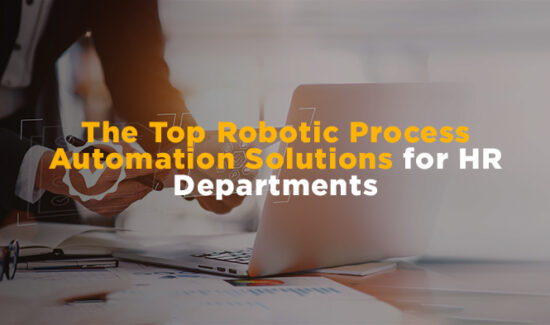4 Ways Enterprise Automation Can Empower Your Cloud Strategy


The editors at Solutions Review have partnered with the experts at Broadcom to outline how enterprise automation can ensure the success of your company’s evolving cloud strategy.
The cloud is fast becoming the platform of choice to power almost every enterprise application. Whether it is public, private, or hybrid clouds, from enterprise resource planning (ERP) and customer relationship management (CRM) to emerging artificial intelligence (AI)-based services and everything in between, the cloud offers flexibility, security, and low total cost of ownership. However, that success is not without its challenges. Automation in all its forms is critical to successful service delivery and delivering operational excellence.
However, as companies continue to embrace cloud strategies, they must consider how their existing automation policies will be impacted and how they can maintain (and optimize) the quality of service delivered. With that in mind, let’s delve into how enterprise automation solutions are uniquely situated to help companies develop, implement, or optimize their cloud strategies for continued success.
Improving Visibility
Reliance on point automation solutions from individual cloud providers often results in “islands of automation,” creating disconnected business processing and IT operations silos. The fragmented visibility these “islands” make lowers operational efficiency and increases risk. It forces operations teams to work with their hands tied, constantly scanning multiple screens to understand every scenario.
An enterprise automation solution offers a different approach, providing a single “pane of glass” for a company’s automated processes, regardless of where they run. This provides workers with a standardized way to design jobs and workflows that easily integrate with the technologies they already use.
Ensuring Business and IT Service Levels are Met
As processing is moved to the cloud or combined with on-premises and cloud services, your service-level agreements (SLAs) become sacred. They define the level of service you expect, laying out the metrics by which service is measured and specifying what remedies or penalties are enacted if agreed-upon service levels are not achieved. It is a critical component of any cloud contract. Suppose processing is segmented into distinct cloud vendor automation platforms. In that case, there is no central point of control or critical path across the process, jeopardizing the ability to maintain or improve our SLAs.
Operations need advanced mechanisms to predict outcomes and alert the team to service delivery risks, which provides them with the time necessary to enact a resolution before the business is impacted. That’s where enterprise automation can help. It offers predictive SLA monitoring and critical path analytics for your business processing, leveraging Machine Learning techniques to improve service delivery. It gives users time to resolve issues before they impact the business, allowing you to move from reactive to proactive monitoring.
Managing Hybrid & Multi-Cloud Environments
Many companies are embracing multi-cloud strategies and are using multiple public and/or private clouds to avoid lock-in, minimize expenses, and optimize performance. When it comes to automation, however, this assortment of cloud environments multiples the risk factors affecting success. Enterprise visibility becomes a significant challenge in a multi-cloud environment. Unchecked cloud growth can quickly result in fragmented automation services, spiraling cost of operation, and a significant drag on your quality of service.
A company must maintain the transportability of services between cloud providers while simultaneously enabling the seamless adoption of new cloud providers as they enter the market. This can only be accomplished with enterprise automation, as it can allow heterogeneous environments, reduce the cost of operation, and remove specific cloud vendors’ integration points, improving service delivery.
Maintaining Security, Governance, and Compliance
Granular role-based access control over who can do what and where is an excellent start for a compliance strategy. However, companies can stop there, as they must also ensure that all the information concerning governance and compliance in every execution is centralized. Who was involved in its execution, for example, when did it happen, and what was the outcome? Without consolidation, we lose the solid foundation of our governance and auditory compliance submissions.
With each cloud provider holding audit and compliance information locally, often in insecure formats like log files, we’re back to the familiar “islands of automation” scenario. You must create bespoke processes to centralize insights whenever someone is using the cloud provider’s automation service. This includes execution statistics, logs, access rights, and access rights human interactions with the jobs.
It could take days or weeks to assemble everything required for audit and governance control. Even then, auditors may be concerned that the insights were correlated manually and not collected at the source. By contrast, enterprise automation automatically centralizes these routines. It’s responsible for requesting the execution and is, therefore, the point of the audit. By centrally storing the activities and outcomes of automation, enterprise automation provides businesses with the traceability they need for audit and compliance across on-premises, private, and public cloud environments.






















